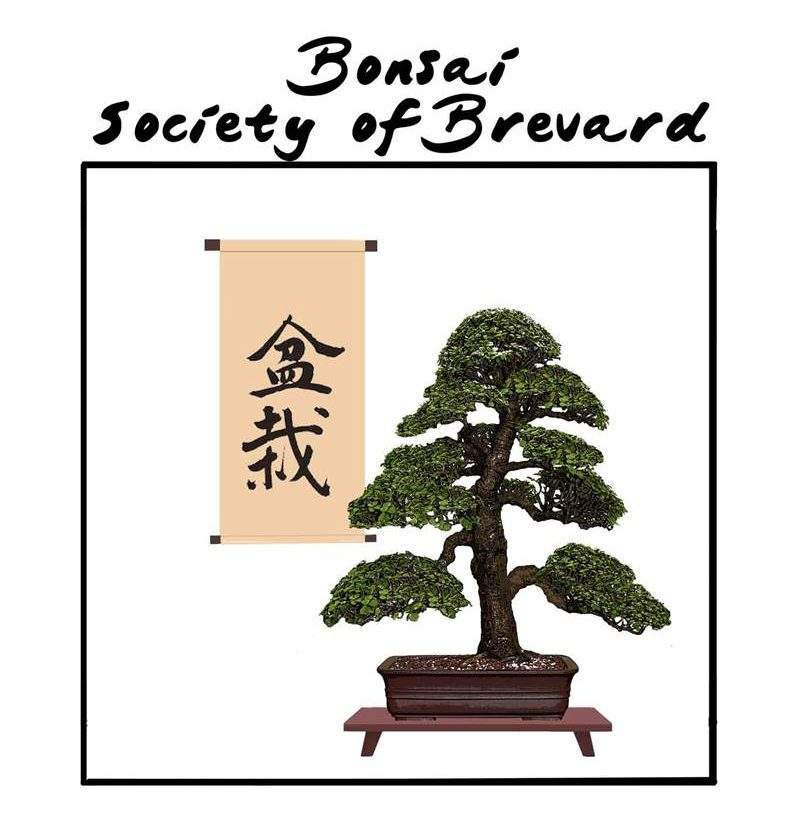This is a continuation of the bonsai care guidance authored by Jim Smith and originally printed in Florida Bonsai Magazine in 1986. It has been updated by Jim and is reprinted with both his permission and that of Florida Bonsai Magazine. The care guidance is suitable for Zones 9b and 10a.

Bonsai in Brevard (Zone 9b and Zone 10a)
Summer begins officially June 21, but in this area it usually feels like it began the first of June or earlier. We can now expect to have hot days every day for the next four months. Usually, the most uncomfortable time of the day is in the morning before the breeze starts, so plan your bonsai chores accordingly.
Watering
Many of your bonsai may need to be watered twice each day for the next four months. Lack of water is one of the main reasons many of our bonsai die during these hot months. Don’t depend on our sudden rain showers, many time they only dampen the surface of the soil. Make sure that the soil is thoroughly soaked each time you water. Then, let the soil dry until it is slightly moist before you water again.
Fertilizer
Don’t neglect to fertilize your plants now that they are growing. You are watering more now therefore the soil is being leached and needs regular applications of fertilizer. Plants growing in full sun need more water and fertilizer than those growing in shade. Use fertilizer that contains the major and minor elements. — Don’t forget to move or turn your bonsai so that they receive sunlight now that the sun is taking a more northerly route.
Insects and Diseases
Continue to be on the lookout for insects on your plants. Since the weather is warm, and this is our rainy season, be prepared to control fungus. Mildew can be a problem in summer, especially on Crepe Myrtle. It is easy to control by spraying with a fungicide such as copper. When using any pesticide always follow the label directions.
Pinching
The refinement of our bonsai can be improved drastically now that our trees are growing so vigorously. Continue to pinch daily those trees that require it or defoliate the plant if it has been neglected.
Potting
Your potting should be completed by now, but most tropical plants can be potted this month. It is important to protect your plant from the sun and wind while potting and until new growth starts. Then gradually move them to their permanent location. Wait a year before defoliating in order to| allow a tree to regain its health.
Cuttings and Layers
If you want to propagate a few easy to root cuttings, you can start them as a forest planting in a shallow tray or pot. Cuttings can be taken in different sizes to represent the trees. Use regular bonsai soil as the potting medium. You can use a bonsai pot that you would normally use for this type of planting or a temporary container that is similar in size to the bonsai pot you will later plant them in. After you have taken your cuttings, remove any unnecessary side branches so that you can position the cuttings in the container the same way you would the trees in any forest planting. After the cuttings have rooted and during the first year of growth, trim only what is absolutely necessary. In a year or two, the trees can be removed as a unit and repotted in a correct bonsai pot. Remove some of the top soil to expose the surface roots and contour the soil. The following year you should start training by cutting the trees to the correct height according to your plan. Remember, the tallest trees are on the inside of the forest. Remove all unwanted branches and shorten those that are too long. After this pruning, check your trees for alignment and correct any faults by wiring. Be sure to study the trees from the front and also the side. Continue to pinch and refine your planting as needed. When repotting a forest planting, it is not necessary to dismantle the forest. Remove the planting as a unit and trim the roots carefully so that the planting remains a single unit.
Bonsai Society of Brevard
For more detailed information contact our Brevard based Bonsai club.
The Bonsai Society of Brevard is one of the many clubs within the Bonsai Societies of Florida.
